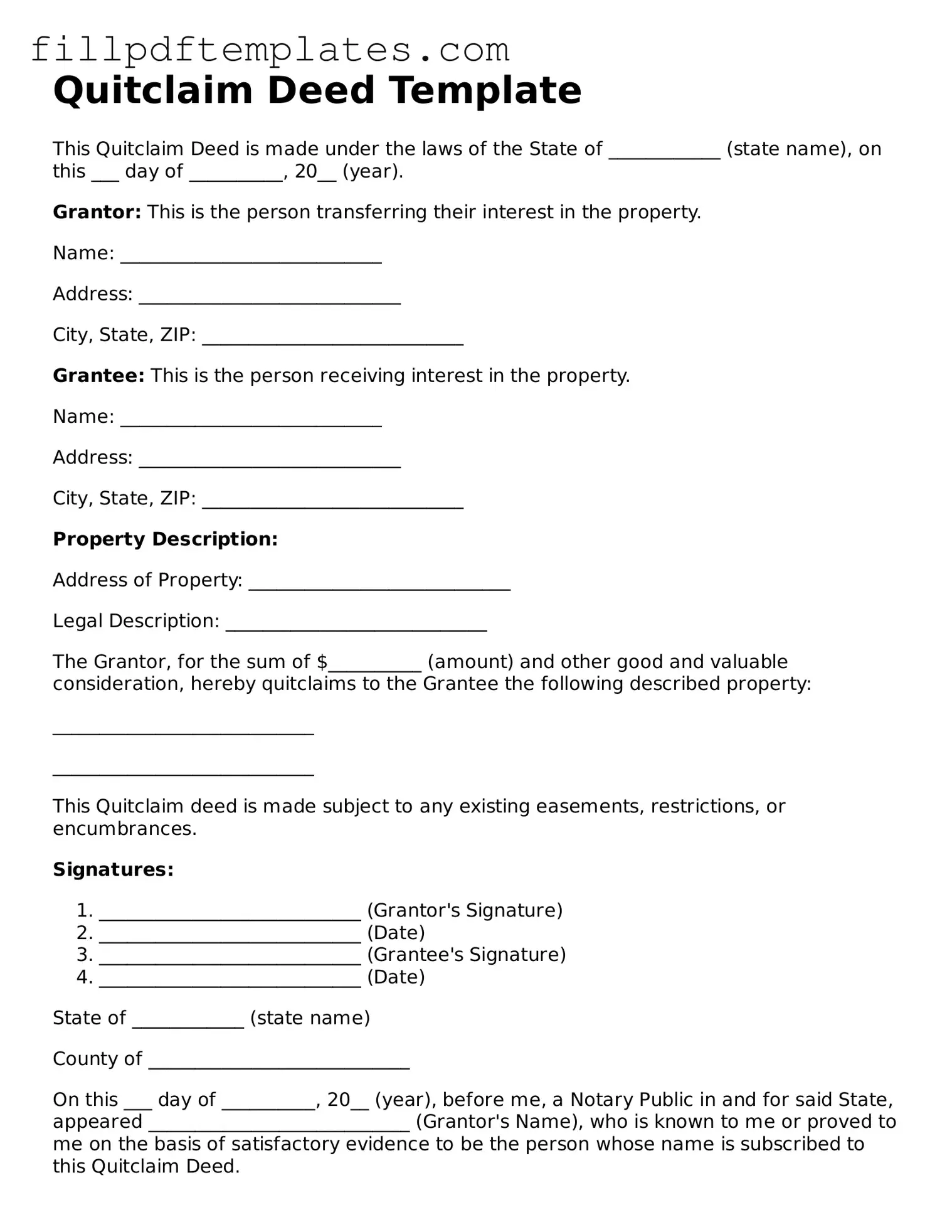Quitclaim Deed Template
This Quitclaim Deed is made under the laws of the State of ____________ (state name), on this ___ day of __________, 20__ (year).
Grantor: This is the person transferring their interest in the property.
Name: ____________________________
Address: ____________________________
City, State, ZIP: ____________________________
Grantee: This is the person receiving interest in the property.
Name: ____________________________
Address: ____________________________
City, State, ZIP: ____________________________
Property Description:
Address of Property: ____________________________
Legal Description: ____________________________
The Grantor, for the sum of $__________ (amount) and other good and valuable consideration, hereby quitclaims to the Grantee the following described property:
____________________________
____________________________
This Quitclaim deed is made subject to any existing easements, restrictions, or encumbrances.
Signatures:
-
____________________________ (Grantor's Signature)
-
____________________________ (Date)
-
____________________________ (Grantee's Signature)
-
____________________________ (Date)
State of ____________ (state name)
County of ____________________________
On this ___ day of __________, 20__ (year), before me, a Notary Public in and for said State, appeared ____________________________ (Grantor's Name), who is known to me or proved to me on the basis of satisfactory evidence to be the person whose name is subscribed to this Quitclaim Deed.
In witness whereof, I have hereunto set my hand and official seal.
____________________________
(Notary Public Signature)
My commission expires: _________________
